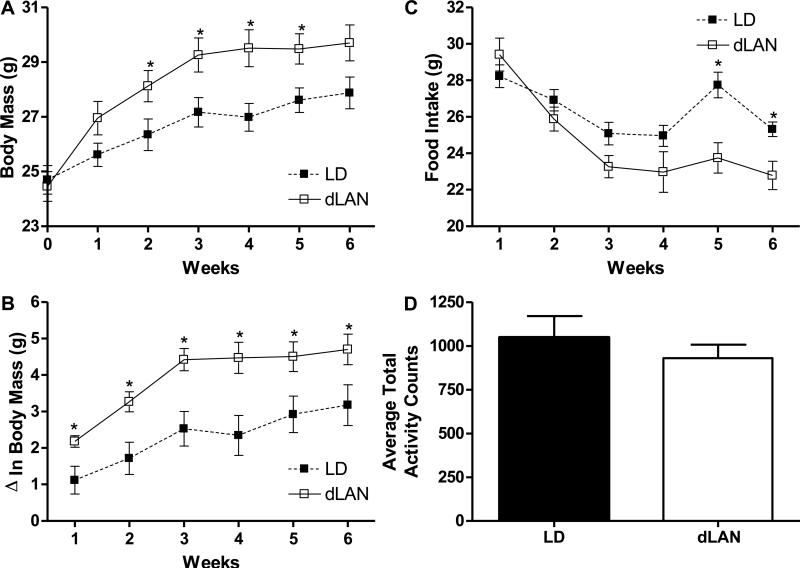Figure 1. Female mice exposed to dim light at night (dLAN) had a greater change in body mass than mice exposed to dark nights (LD), despite decreased food intake in dLAN mice compared to LD mice in weeks five and six.
Body mass interacted with lighting across the six weeks of the experiment such that mice in dLAN (n=11) had a greater gain in body mass than mice in LD (n=9) (A). Change in body mass was increased in dLAN (n=11) mice compared to LD (n=9) mice across the six weeks of the experiment (B). Food intake across the six weeks of the experiment, LD (n=8) mice had increased food intake on weeks five and six compared to dLAN (n=11) exposed mice (C). Mice in LD (n=7) and dLAN (n=8) had similar amounts of 24 hour (h) activity averaged for the four days of home cage monitoring (D). Significant mean differences p<0.05 indicated by asterisk (*).

